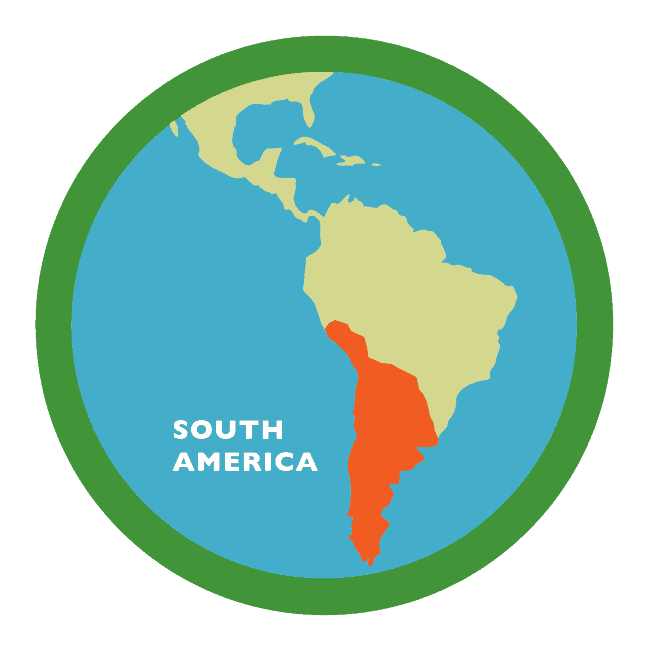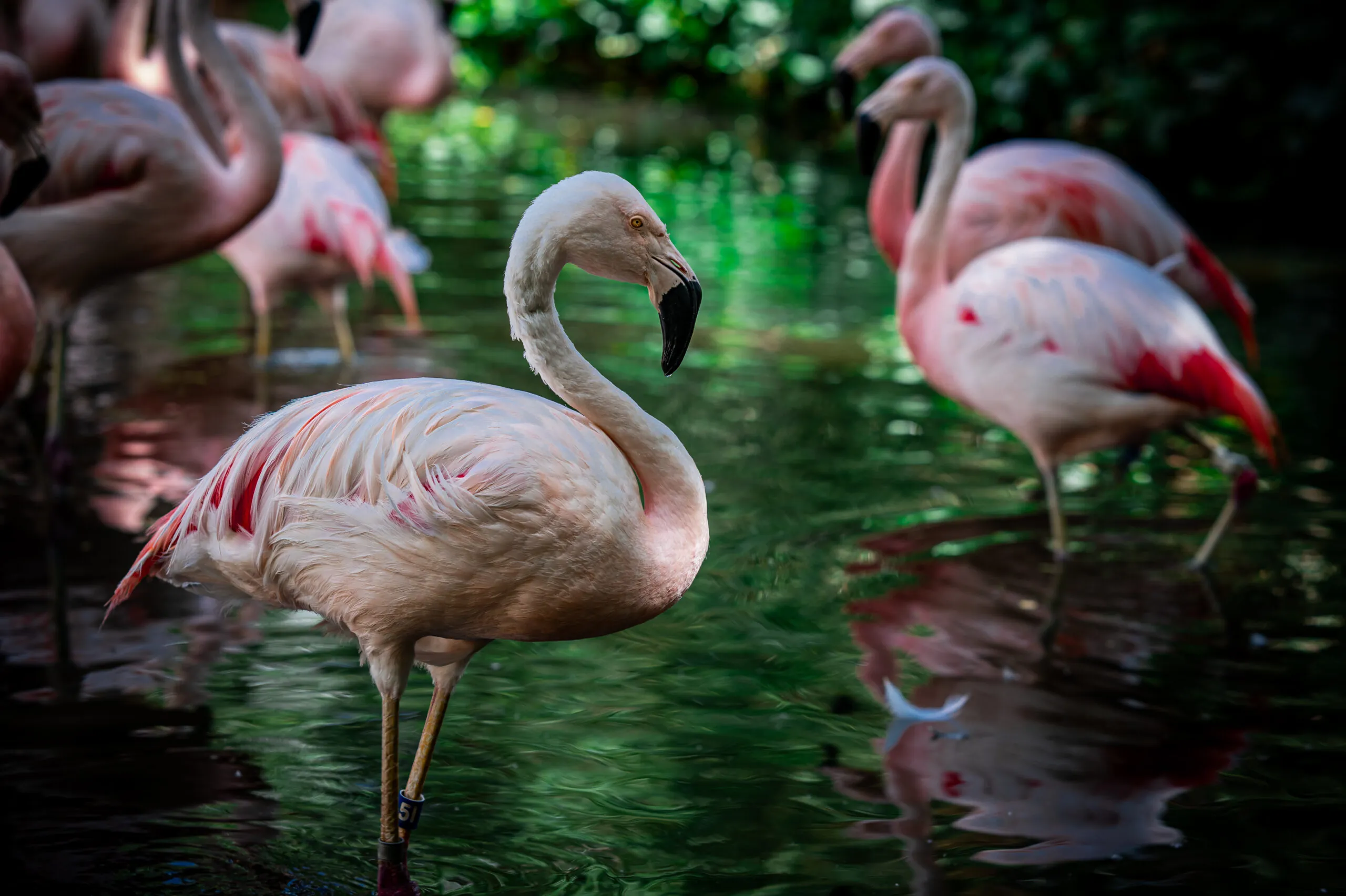Greater flamingos
Flamingos
phoenicopterus SPP.
In The Pink
Flamingos get their color from carotenoids, substances found in the foods that they eat. These carotenoids are broken down into pigments and distributed to growing feathers. At the Zoo, we exhibit Chilean and greater flamingos. Chilean flamingos have a light pink plumage, with pink joints on their grey legs. In greater flamingos, the pigment is distributed on their wings, legs and beaks, leaving the rest of the body almost white.
You may see areas of darker pink on the backs and wings of some flamingos. During breeding season, they gather oil from the preen gland just above their tails. The oil has extra pigment in it which they use to paint themselves.
No Fish, Please
Flamingos are filter feeders, surviving on food that is very small. When eating, they lower their heads upside-down into the water and move them around in order to stir up food. Their tongues move back and forth, pumping water through tiny structures in their bills that filter small crustaceans, algae and insect larvae. Then they raise their heads and swallow. You usually don’t see flamingos in water that has a lot of fish as they typically live in shallow, salty lakes where there are no fish to compete for food.
A Leg to Stand On
Flamingos spend a lot of time standing on one leg. In 2017, researchers discovered that a flamingo is more stable, and uses less energy, when standing on one leg instead of two. We don’t know how they do it yet, but they don’t use their muscles to maintain balance, and it’s even easier for them to stand still when they’re asleep. Try to stand on one leg and close your eyes and see if you don’t appreciate flamingos just a little more.
Flamingo Species at the Phoenix Zoo
- Chilean (Phoenicopterus chilensis)
- Greater (Phoenicopterus roseus)
Chilean Flamingo

Greater Flamingo

Diet: crustaceans, aquatic insects, larvae, seeds, algae, mollusks
Zoo Diet: formulated feed
Habitat: lagoons, lakes, mangroves, swamps
Height: 2.6 – 4.7 ft



Chilean flamingos
Plan your visit today!
The Phoenix Zoo is one of the largest non-profit zoos in the U.S., caring for over 3,000 animals, with nearly 400 species represented, including many threatened/endangered species.

Plan your visit today!
The Phoenix Zoo is one of the largest non-profit zoos in the U.S., caring for over 3,000 animals, with nearly 400 species represented, including many threatened/endangered species.








